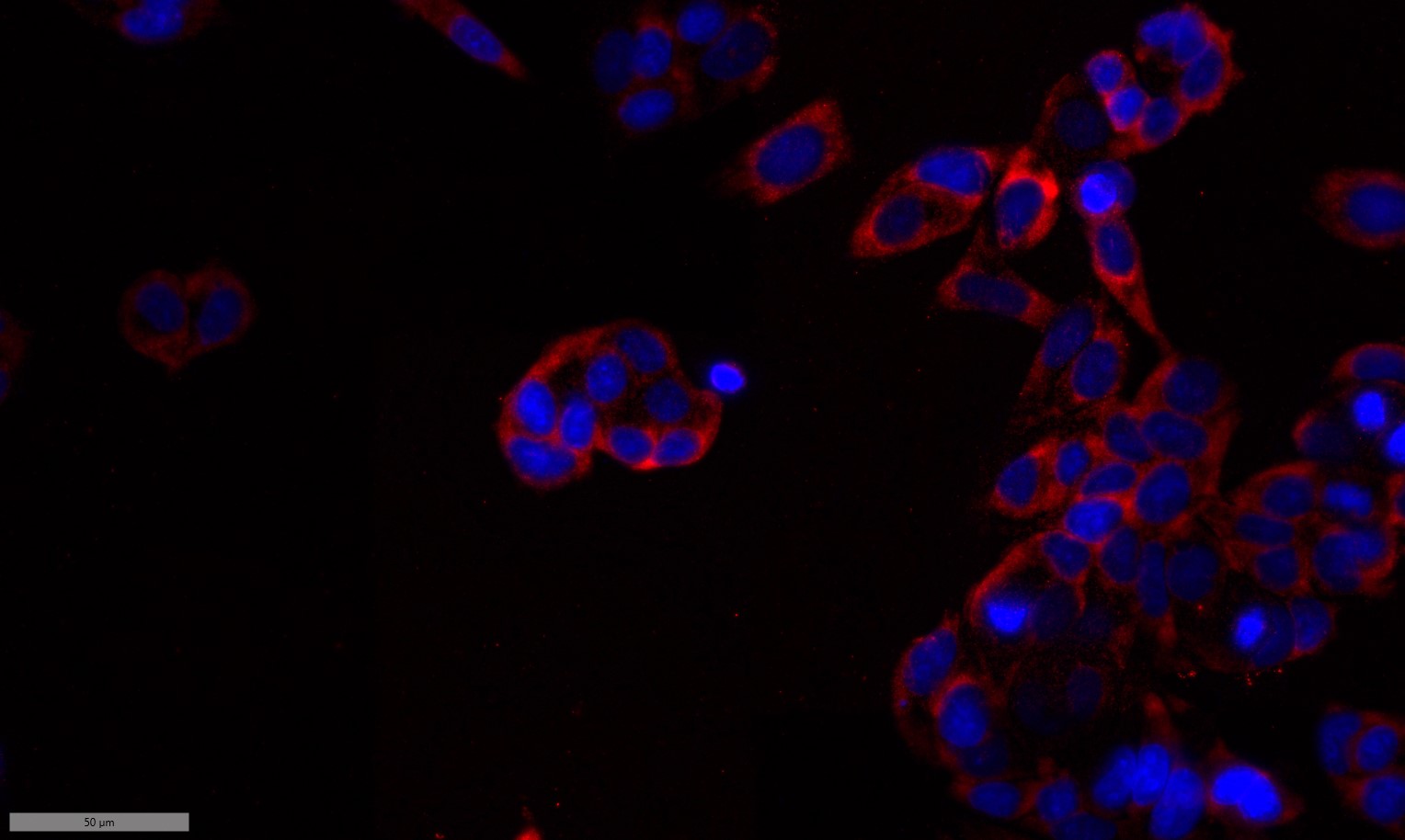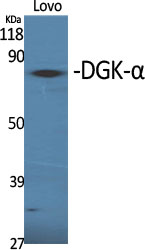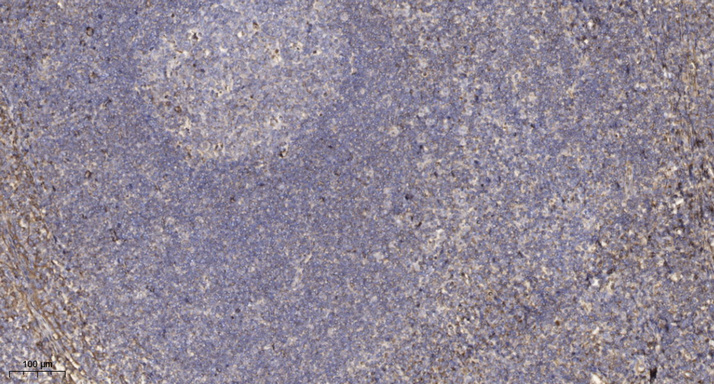DGK-α Polyclonal Antibody
- Catalog No.:YT1331
- Applications:WB;IHC;IF;ELISA
- Reactivity:Human;Rat;Mouse;
- Target:
- DGK-α
- Fields:
- >>Glycerolipid metabolism;>>Glycerophospholipid metabolism;>>Metabolic pathways;>>Phosphatidylinositol signaling system;>>Phospholipase D signaling pathway;>>Choline metabolism in cancer
- Gene Name:
- DGKA
- Protein Name:
- Diacylglycerol kinase alpha
- Human Gene Id:
- 1606
- Human Swiss Prot No:
- P23743
- Mouse Swiss Prot No:
- O88673
- Immunogen:
- The antiserum was produced against synthesized peptide derived from human DGKA. AA range:304-353
- Specificity:
- DGK-α Polyclonal Antibody detects endogenous levels of DGK-α protein.
- Formulation:
- Liquid in PBS containing 50% glycerol, 0.5% BSA and 0.02% sodium azide.
- Source:
- Polyclonal, Rabbit,IgG
- Dilution:
- WB 1:500 - 1:2000. IHC 1:100 - 1:300. ELISA: 1:20000.. IF 1:50-200
- Purification:
- The antibody was affinity-purified from rabbit antiserum by affinity-chromatography using epitope-specific immunogen.
- Concentration:
- 1 mg/ml
- Storage Stability:
- -15°C to -25°C/1 year(Do not lower than -25°C)
- Other Name:
- DGKA;DAGK;DAGK1;Diacylglycerol kinase alpha;DAG kinase alpha;80 kDa diacylglycerol kinase;Diglyceride kinase alpha;DGK-alpha
- Observed Band(KD):
- 80kD
- Background:
- The protein encoded by this gene belongs to the eukaryotic diacylglycerol kinase family. It acts as a modulator that competes with protein kinase C for the second messenger diacylglycerol in intracellular signaling pathways. It also plays an important role in the resynthesis of phosphatidylinositols and phosphorylating diacylglycerol to phosphatidic acid. Alternative splicing occurs at this locus and four transcript variants encoding the same protein have been identified. [provided by RefSeq, Jul 2008],
- Function:
- catalytic activity:ATP + 1,2-diacylglycerol = ADP + 1,2-diacyl-sn-glycerol 3-phosphate.,enzyme regulation:Stimulated by calcium and phosphatidylserine. Phosphorylated by protein kinase C.,function:Upon cell stimulation converts the second messenger diacylglycerol into phosphatidate, initiating the resynthesis of phosphatidylinositols and attenuating protein kinase C activity.,similarity:Belongs to the eukaryotic diacylglycerol kinase family.,similarity:Contains 1 DAGKc domain.,similarity:Contains 2 EF-hand domains.,similarity:Contains 2 phorbol-ester/DAG-type zinc fingers.,subunit:Monomer.,tissue specificity:Lymphocytes and oligodendroglial cells.,
- Subcellular Location:
- Cytoplasm, cytosol .
- Expression:
- Expressed in lymphocytes.
- June 19-2018
- WESTERN IMMUNOBLOTTING PROTOCOL
- June 19-2018
- IMMUNOHISTOCHEMISTRY-PARAFFIN PROTOCOL
- June 19-2018
- IMMUNOFLUORESCENCE PROTOCOL
- September 08-2020
- FLOW-CYTOMEYRT-PROTOCOL
- May 20-2022
- Cell-Based ELISA│解您多样本WB检测之困扰
- July 13-2018
- CELL-BASED-ELISA-PROTOCOL-FOR-ACETYL-PROTEIN
- July 13-2018
- CELL-BASED-ELISA-PROTOCOL-FOR-PHOSPHO-PROTEIN
- July 13-2018
- Antibody-FAQs
- Products Images

- Immunofluorescence analysis of MCF7 cell. 1,primary Antibody was diluted at 1:100(4°C overnight). 2, Goat Anti Rabbit IgG (H&L) - AFluor 594 Secondary antibody(catalog No: RS3611) was diluted at 1:500(room temperature, 50min).

- Western Blot analysis of various cells using DGK-α Polyclonal Antibody
.jpg)
- Western Blot analysis of Lovo cells using DGK-α Polyclonal Antibody

- Western blot analysis of lysates from Jurkat cells, using DGKA Antibody. The lane on the right is blocked with the synthesized peptide.

- Immunohistochemical analysis of paraffin-embedded human tonsil. 1, Antibody was diluted at 1:200(4° overnight). 2, Tris-EDTA,pH9.0 was used for antigen retrieval. 3,Secondary antibody was diluted at 1:200(room temperature, 30min).



